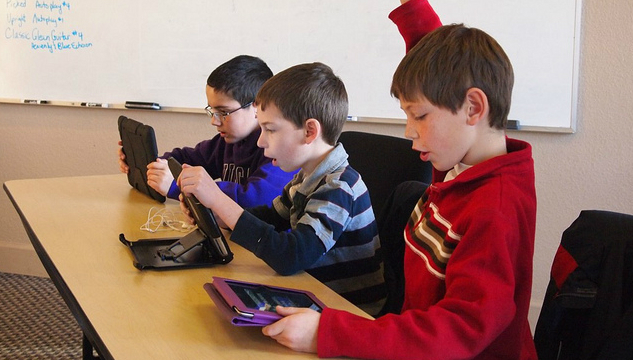“We’re about to give your fourteen-year-old a computer,” Michael Allen recently told a group of parents attending a new student orientation, “and here’s why it could scare you.” Then Allen, the principal of no-textbook New Tech High School, said he understood their biggest fears -- the new sites and technologies that crop up all the time, kids multitasking while doing schoolwork, the reality of parents’ lack of control over what their kids see and how they behave online.
But for Allen and many like him who are integrating technology in schools, guiding the behaviors that accompany a new way of learning is just as important as the content they’ll be covering in school -- if not more so. In order to be successful, Allen maintains that students need to learn trust, respect and responsibility for technology. He knows that many of the situations that come up in a school where computers are the only conduit of information must be addressed earlier rather than later, and parents and teachers need to be leading the way.
Parents sometimes say that today’s students are so far ahead in the technological realm, that the older generations can turn to them for help, writes education journalist John Merrow, author of The Influence of Teachers. He worries that this kind of thinking will resign adult responsibility. “But being a ‘digital native’ is not the same as being a ‘digital citizen.’ Young people have always needed ethical guidance and the security of rules and boundaries.”
Allen also believes adults should set the boundaries for where and when not to use tech. He cites a recent example of taking biology students on a field trip to a nearby river. After some discussion, he and the teachers decided to leave all the technology at school, including cell phones. "The kids were fine with it," he said. "We have to be able to have a conversation with the kids where we say, you'll be losing [part of the experience] if you take it with you."
But how do parents and teachers work together to set the boundaries? Educator and school leader Matt Levinson, author of From Fear to Facebook, says that parents and schools equipped with technology are, in effect, challenged with overseeing two worlds: the real and the virtual. “The Internet is vast, and as one parent said to me, ‘You can't take down the Internet.’"


